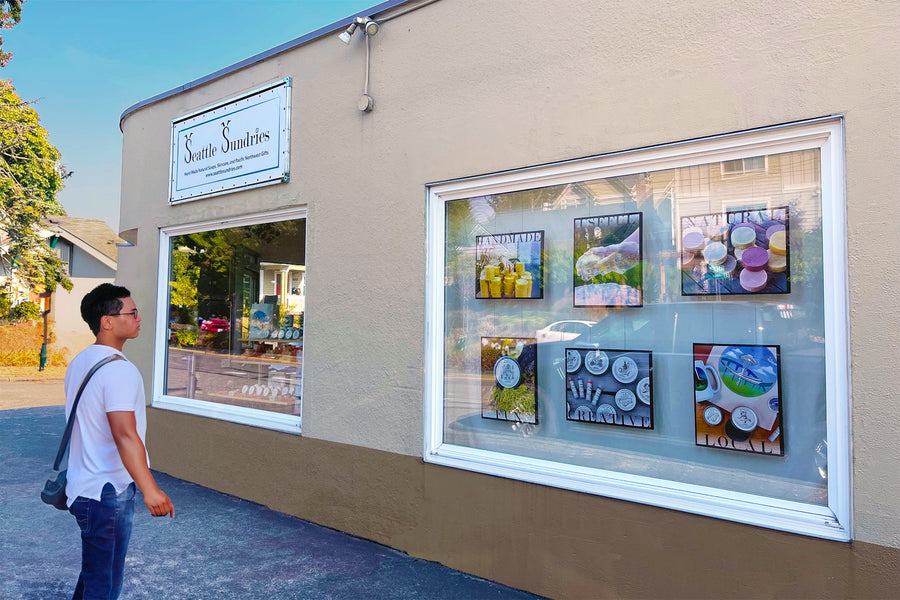Shaving Brushes…TMI?

My dad has always lathered up for a shave using a puck of traditional shaving soap in a mug and a shaving brush. I remember the sound of the tap, tap, tap as the edge of the mug came in contact with the brush handle as it went ‘round and ‘round to build up more foamy lather. My husband has also become a convert to traditional shaving or “wet shaving”, as it’s often called. He likes the morning ritual of it, as well as the fact that it’s natural and much less wasteful than shaving foam from a can.
I have spent the last several years learning as much as I can about how to make a great shaving soap (more to come on that soon). I also wanted to be able to offer my customers great shaving accessories to go along with the soap, so I’ve also been learning lots about shaving brushes. Here’s some of what I’ve found out…
There are basically three types of shaving brushes: synthetic bristle, boar bristle (often just called “bristle brushes”), and those made from badger hair. Synthetic and boar bristle brushes are the less expensive options. Synthetic brushes have the advantage of not being made from an animal, but they lack the flexibility and lather-building capabilities of bristle or natural hair brushes, primarily because they are not capable of holding a sufficient amount of water to build a good lather.
Boar bristle brushes have a much firmer knot than badger hair brushes. This is not necessarily a bad thing. For some types of shaving soaps, a much firmer brush is an advantage in building robust lather, and so might be preferable. The bristles on a boar brush have the disadvantage of breaking somewhat easily, but do offer much better moisture control than synthetic brushes, for a low cost.
A badger hair brush is the softest and therefore most comfortable on the face. With the proper lather-building technique, a fine rich foam can be achieved. Badger hair brushes come in 5 different grades based on the part of the badger’s body where the hair comes from. Badger hair brushes can range in price from $30 to upwards of $600. The price difference is due in part to the availability of each grade. For example, “pure” badger grade hair covers approximately 60% of the animal and its abundance lowers the price. Performance is also a factor. “Silvertip” grade hair comes from the area around the badger’s neck and is the longest, softest and best for holding water and building a moist lather. It’s also insanely expensive.




Leave a comment